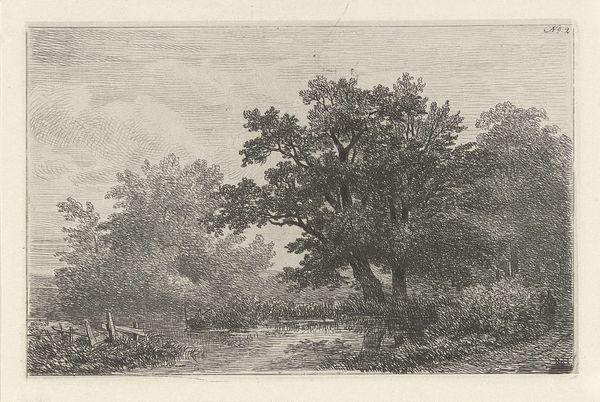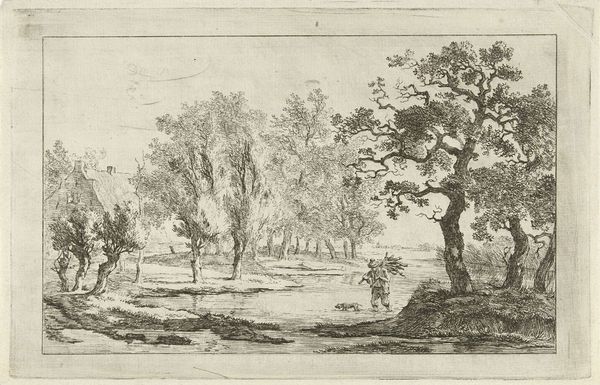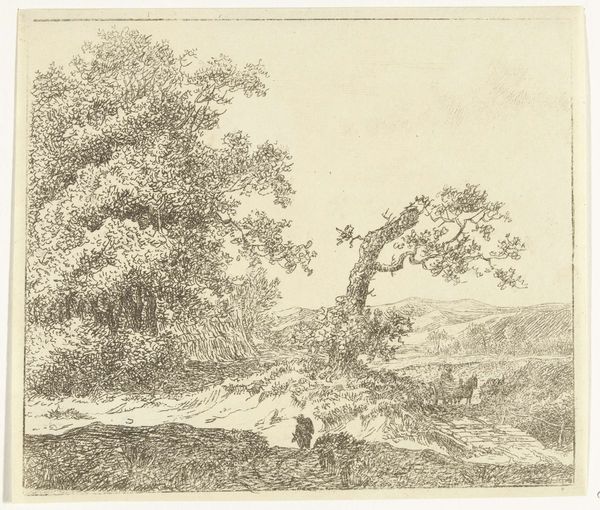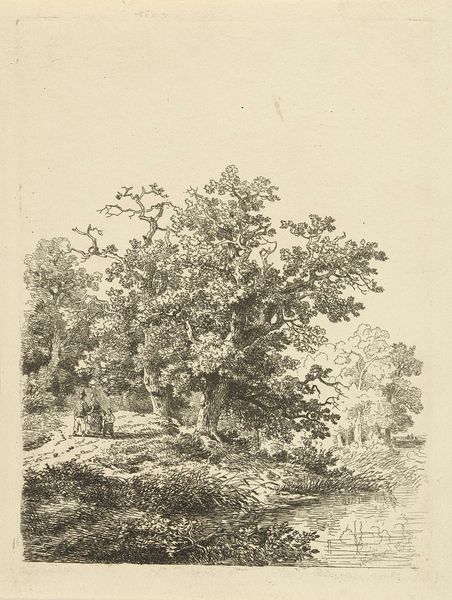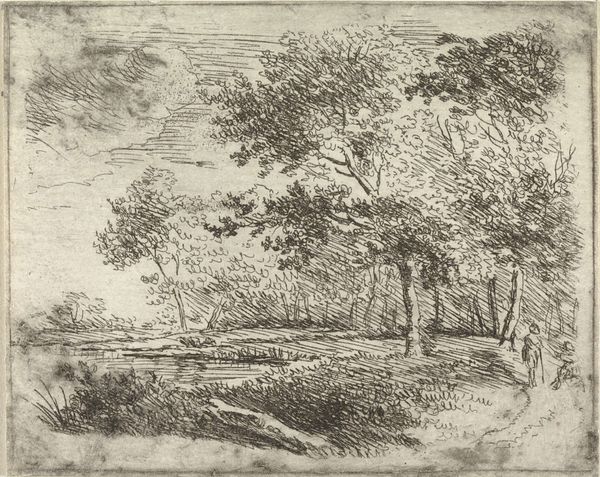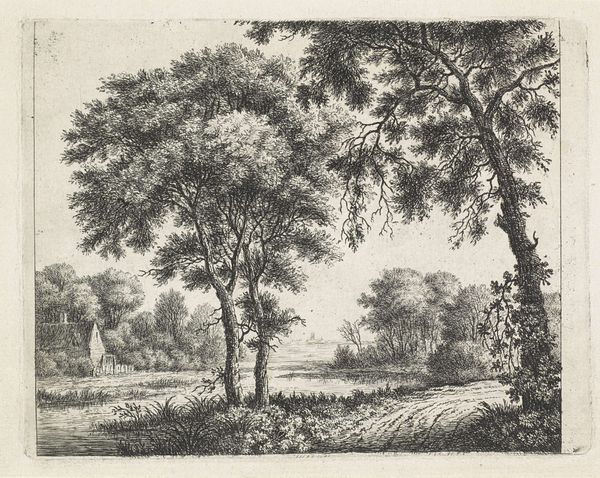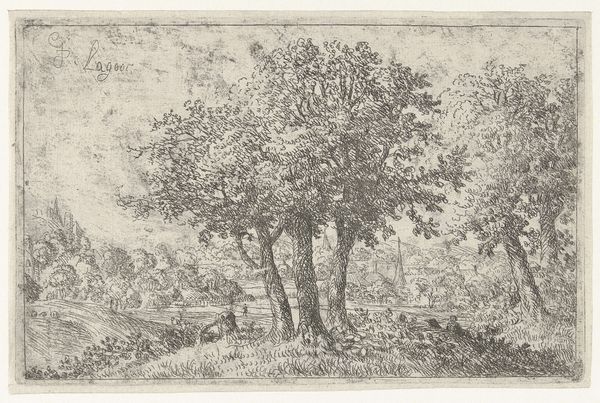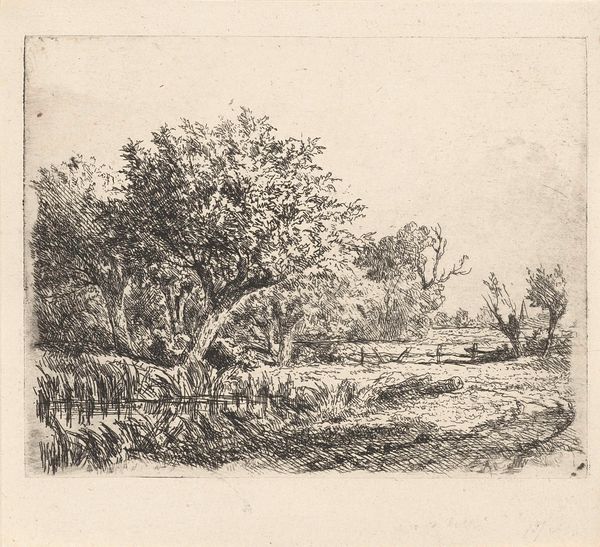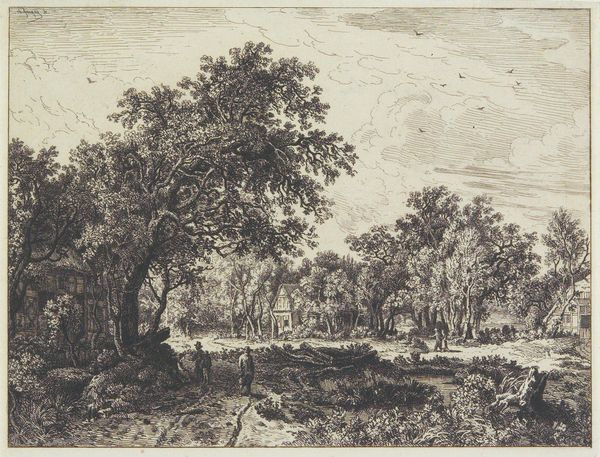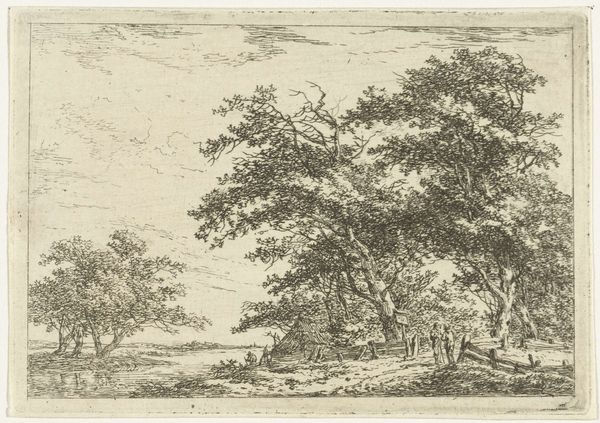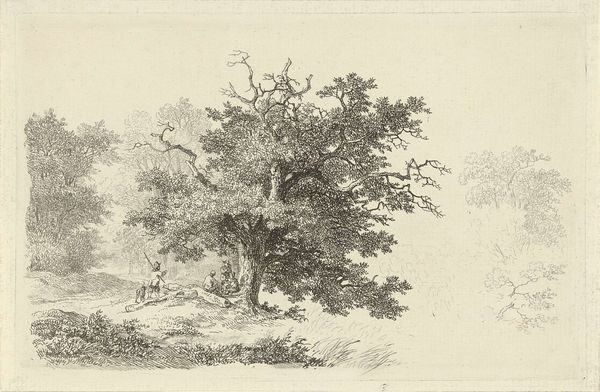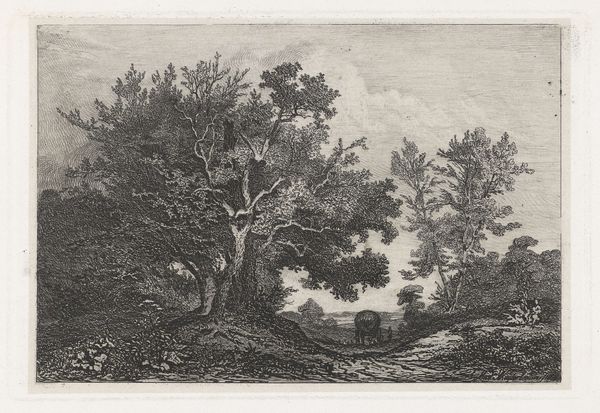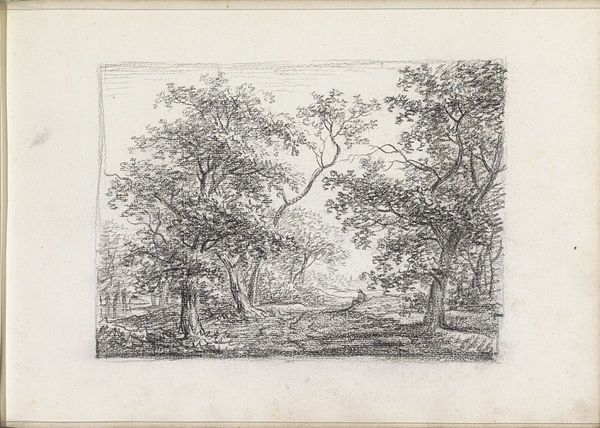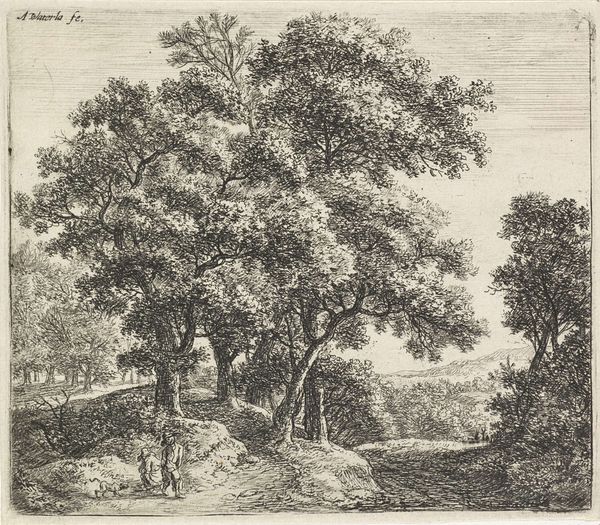
Dimensions: height 98 mm, width 124 mm
Copyright: Rijks Museum: Open Domain
Curator: We're looking at "Houten hut onder twee bomen," or "Wooden Hut Under Two Trees," an etching by Johannes Pieter van Wisselingh dating roughly between 1830 and 1878. Editor: The piece immediately evokes a sense of secluded calm; a little world unto itself, created by delicate cross-hatching. Curator: Indeed. Van Wisselingh masterfully utilizes the etching technique to build texture and form. Note the contrast between the intricate foliage and the stark simplicity of the hut's construction. There is a very evident play of light and shadow—chiaroscuro. The density of the etched lines defines the depth and substance within the landscape. Editor: Beyond its formal qualities, I see a subtle commentary on human intervention in nature. The rustic hut feels harmonious within its environment but simultaneously signifies a claim, a presence that inherently alters the natural world. The romantic element can be seen within that interplay between an individual's shelter set alongside two mighty trees—both enduring natural elements but one crafted through societal advancement. Curator: You touch on the interesting intersection of Romanticism and a slightly earlier, Northern Renaissance sensibility in the detailed rendering. The texture almost appears engraved. He shows clear delight in form—almost a topological observation of how shapes stack within the perceived visual plane. Editor: I'd go a step further. Thinking about land usage during that period, I wonder what social implications were intended to be layered into this representation? Was there critique implied through contrasting that tiny structure under those larger, naturally developed components, reflecting ownership and use, and pointing perhaps to land displacement by farmers against naturally protected areas, or simply about shelter within a natural landscape? It gives pause, no? Curator: It presents a lot to unpack. Looking at the landscape and seeing the mark making in the treatment of light, dark, mass and surface offers so much. The composition and detail—the technical skill on display, is striking. Editor: Precisely! Hopefully this image starts conversation that questions perceived aesthetic versus embedded, and very real political and sociological themes within otherwise beautiful art.
Comments
No comments
Be the first to comment and join the conversation on the ultimate creative platform.
